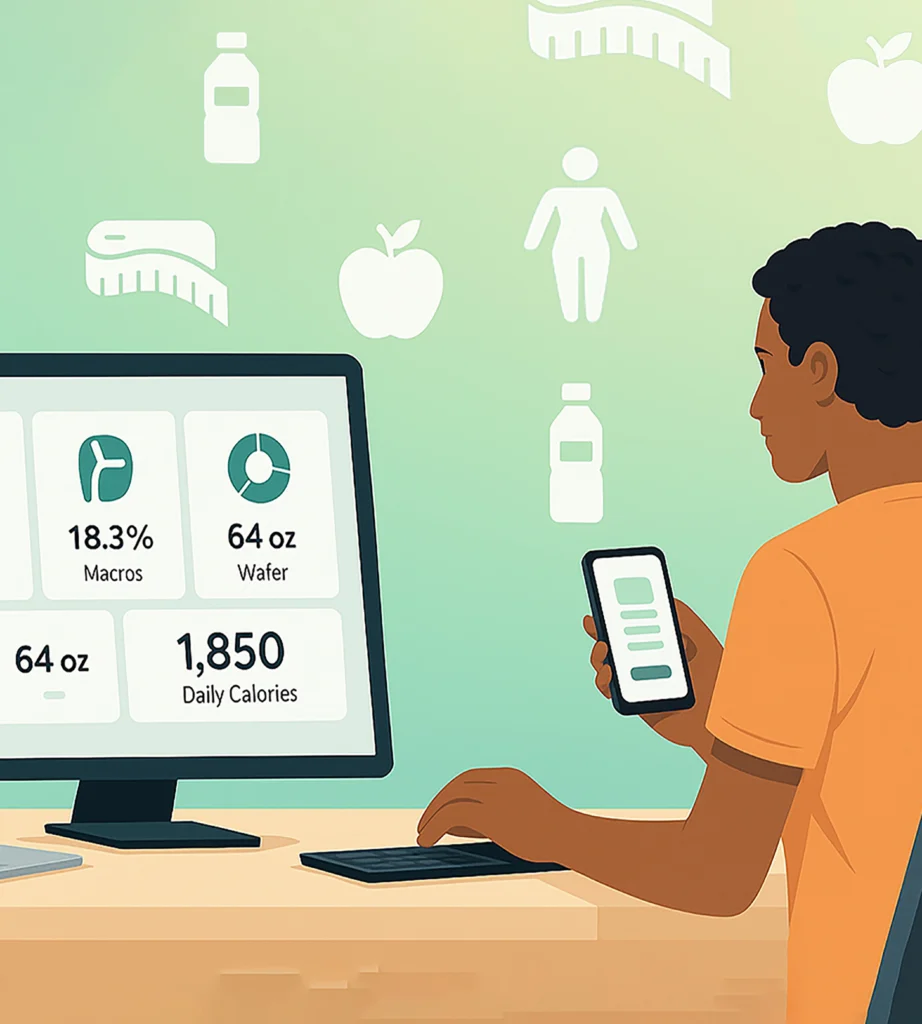
Take control of your fitness journey with our easy-to-use weight loss tools. From calculating your BMI and daily calorie needs to tracking macros, water intake, and body fat percentage, these tools give you instant insights to make smarter health decisions. Whether your goal is to lose fat, build muscle, or simply stay healthy, our calculators are designed to guide you with accurate, practical results.
BMI is a general guide and not a diagnosis.
What BMI Tells You
Body Mass Index (BMI) is a simple calculation of weight and height that gives a quick estimate of whether you’re underweight, in a healthy range, overweight, or obese.
Why it helps: Provides an easy starting point to check your weight status.
Limitations: Doesn’t distinguish between muscle and fat. Athletes may score higher even at healthy body fat levels.
Note: Use BMI as a guide, not a diagnosis. Pair it with other measurements for a fuller health picture.
What Body Fat % Tells You
Body fat percentage measures fat versus lean mass (muscle, bone, water). This simple tape-measure method gives a practical at-home estimate.
Why it helps: Tracks body composition changes beyond the scale.
Accuracy tips: Measure at the same time each day, relaxed, and consistently in the same spots.
Note: This is an estimate, not a medical test. For precise readings, consider DEXA scans or professional methods.
Tape measurements should be relaxed and consistent. This is an estimate.
Protein & carbs = 4 kcal/g, fat = 9 kcal/g.
What Macros Tell You
Macronutrients — protein, carbs, and fat — fuel your body and shape your results. A macros breakdown helps you hit the right balance for energy, muscle support, and fat loss.
Why it helps: Ensures you get enough protein for muscle, carbs for energy, and fat for hormone health.
How to use it: Enter your calories and goal to see your daily grams of each nutrient.
Note: Ratios are a starting point — fine-tune based on energy, recovery, and results.
What Water Intake Tells You
Hydration plays a key role in weight loss, digestion, and workout performance. Your daily needs depend on your body weight and activity level.
Why it helps: Supports metabolism, reduces hunger, and keeps energy levels steady.
How to use it: Drink about 35 ml per kg of body weight, plus extra for exercise.
Note: Check urine color as a hydration indicator. Needs vary with climate and health.
~35 ml/kg + ~500 ml per 30 min exercise. Adjust for climate/health.
BMR via Mifflin–St Jeor × activity factor.
What TDEE Tells You
Total Daily Energy Expenditure (TDEE) shows how many calories your body burns each day, factoring in your activity level. It helps you plan how much to eat for weight loss, maintenance, or muscle gain.
Why it helps: Creates a personalized calorie target for your goals.
How to use it: Eat below your TDEE to lose weight, at TDEE to maintain, and slightly above to gain muscle.
Note: Results are estimates. Adjust calories every few weeks based on real progress.